-
 Bitcoin
Bitcoin $107,443.3008
-1.17% -
 Ethereum
Ethereum $2,494.2503
-0.63% -
 Tether USDt
Tether USDt $1.0003
0.00% -
 XRP
XRP $2.2496
2.23% -
 BNB
BNB $658.7569
0.63% -
 Solana
Solana $154.9826
1.94% -
 USDC
USDC $1.0000
0.01% -
 TRON
TRON $0.2799
1.07% -
 Dogecoin
Dogecoin $0.1659
-1.78% -
 Cardano
Cardano $0.5745
0.25% -
 Hyperliquid
Hyperliquid $39.7005
0.13% -
 Bitcoin Cash
Bitcoin Cash $519.5989
3.78% -
 Sui
Sui $2.7874
-2.40% -
 Chainlink
Chainlink $13.3762
-1.69% -
 UNUS SED LEO
UNUS SED LEO $9.0784
-0.64% -
 Avalanche
Avalanche $17.9846
-2.81% -
 Stellar
Stellar $0.2390
-0.06% -
 Toncoin
Toncoin $2.9028
0.25% -
 Shiba Inu
Shiba Inu $0.0...01147
-2.17% -
 Litecoin
Litecoin $86.6956
-1.27% -
 Hedera
Hedera $0.1508
-0.50% -
 Monero
Monero $322.6222
3.26% -
 Polkadot
Polkadot $3.4124
-2.99% -
 Dai
Dai $0.9999
0.00% -
 Bitget Token
Bitget Token $4.5434
-1.97% -
 Ethena USDe
Ethena USDe $1.0002
0.00% -
 Uniswap
Uniswap $7.1562
-2.61% -
 Aave
Aave $275.8830
-1.02% -
 Pepe
Pepe $0.0...09790
-4.04% -
 Pi
Pi $0.5018
-5.09%
How to set transaction fees in Phantom Wallet?
Phantom Wallet users can optimize transaction speed and cost by setting fees to Low, Medium, or High, or customizing them based on urgency and budget.
Apr 05, 2025 at 10:00 pm
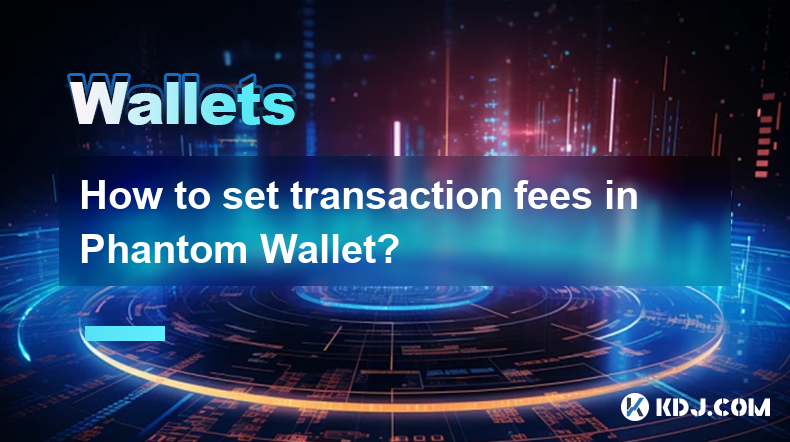
Setting transaction fees in Phantom Wallet is a crucial aspect of managing your cryptocurrency transactions effectively. Phantom Wallet, a popular non-custodial wallet for Solana and other cryptocurrencies, allows users to customize their transaction fees to optimize speed and cost. Understanding how to set these fees can help you manage your transactions more efficiently, whether you're sending SOL, SPL tokens, or interacting with decentralized applications (dApps). In this article, we will guide you through the process of setting transaction fees in Phantom Wallet, explaining the different options available and how they impact your transactions.
Understanding Transaction Fees in Phantom Wallet
Before diving into how to set transaction fees, it's important to understand what they are and why they matter. Transaction fees are payments made to validators on the Solana network for processing and confirming your transactions. These fees are essential for maintaining the network's performance and security. In Phantom Wallet, you have the flexibility to adjust these fees based on your urgency and budget. Higher fees can result in faster transaction processing, while lower fees might take longer but save you money.
Accessing the Transaction Fee Settings
To start setting your transaction fees in Phantom Wallet, you first need to access the settings. Here's how you can do it:
- Open the Phantom Wallet application on your device.
- Navigate to the "Settings" menu, usually found in the top right corner of the app.
- Scroll down to find the "Transaction Fees" or "Fee Settings" option.
Once you're in the fee settings, you'll see different options for adjusting your transaction fees. Phantom Wallet typically offers three preset options: Low, Medium, and High, each corresponding to different fee levels.
Choosing the Right Fee Level
Phantom Wallet provides three preset fee levels to cater to different user needs:
- Low Fee: This option is ideal if you're not in a hurry and want to save on costs. Transactions with low fees may take longer to process but are cheaper.
- Medium Fee: This is a balanced option, suitable for most transactions where you need a reasonable processing time without incurring high costs.
- High Fee: Choose this if you need your transaction to be processed quickly. High fees incentivize validators to prioritize your transaction, resulting in faster confirmation times.
You can select the fee level that best suits your needs by tapping on the desired option. The wallet will then use this setting for your next transaction.
Customizing Transaction Fees
For users who want more control over their transaction fees, Phantom Wallet also offers the option to set a custom fee. Here's how you can do it:
- In the "Transaction Fees" section, look for an option labeled "Custom" or "Advanced."
- Enter the specific fee amount you wish to pay. This is usually measured in lamports, the smallest unit of SOL.
- Confirm your custom fee setting.
Custom fees allow you to fine-tune your transaction costs based on your specific requirements. However, keep in mind that setting a fee too low might result in your transaction being delayed or even rejected by the network.
Impact of Transaction Fees on Transaction Speed
The fee you set directly impacts how quickly your transaction is processed. Here's how different fee levels affect transaction speed:
- Low Fee: Transactions with low fees may take longer to be included in a block and confirmed by the network. This is because validators prioritize transactions with higher fees.
- Medium Fee: A medium fee strikes a balance, offering a reasonable processing time without being too expensive. Most users find this level suitable for everyday transactions.
- High Fee: High fees ensure that your transaction is prioritized by validators, resulting in faster processing and confirmation times. This is useful for time-sensitive transactions.
Understanding this relationship between fees and speed can help you make informed decisions when setting your transaction fees.
Monitoring and Adjusting Fees
It's a good practice to monitor your transaction fees and adjust them as needed. Here are some tips for managing your fees effectively:
- Check Network Congestion: During times of high network congestion, you might need to increase your fees to ensure timely processing.
- Review Transaction History: Look at your past transactions to see how different fee levels have affected processing times.
- Stay Updated: Keep an eye on any updates or changes to the Solana network that might affect transaction fees.
By regularly reviewing and adjusting your fees, you can optimize your transaction experience and save on costs.
Using Phantom Wallet for Different Types of Transactions
Phantom Wallet is versatile and can be used for various types of transactions, each of which might require different fee settings. Here are some common use cases:
- Sending SOL: When sending SOL to another wallet, you can choose a fee level based on how quickly you need the transaction to be processed.
- Interacting with dApps: When using decentralized applications, you might need to adjust your fees depending on the specific requirements of the dApp.
- Swapping Tokens: If you're swapping tokens on a decentralized exchange, you might want to use a higher fee to ensure the swap is processed quickly.
Understanding the specific needs of each transaction type can help you set the most appropriate fee level.
Tips for Optimizing Transaction Fees
Here are some additional tips to help you optimize your transaction fees in Phantom Wallet:
- Batch Transactions: If you need to make multiple transactions, consider batching them into a single transaction to save on fees.
- Use Fee Estimation Tools: Some dApps and platforms offer fee estimation tools that can help you set the optimal fee for your transaction.
- Stay Informed: Keep up with the latest developments in the Solana ecosystem, as changes can affect transaction fees and processing times.
By following these tips, you can make the most of Phantom Wallet's fee settings and manage your transactions more efficiently.
Common Questions About Setting Transaction Fees in Phantom Wallet
Q: What are the default transaction fee settings in Phantom Wallet?
A: Phantom Wallet typically comes with default settings of Low, Medium, and High fee options. The exact fee amounts can vary based on network conditions, but these presets provide a starting point for most users.
Q: Can I change the transaction fee after I've set it?
A: Once a transaction is initiated, the fee cannot be changed. However, you can adjust the fee settings for future transactions at any time through the wallet's settings menu.
Q: How do I know if my transaction fee is too low?
A: If your transaction is taking longer than expected to be confirmed, it might be due to a low fee. You can check the transaction status in Phantom Wallet and consider resubmitting with a higher fee if necessary.
Q: What happens if I set a custom fee that's too high?
A: Setting a custom fee that's too high will result in your transaction being processed quickly, but you'll pay more than necessary. It's a good idea to use fee estimation tools to find the right balance.
Q: Are there any risks associated with setting very low transaction fees?
A: Yes, setting very low fees can lead to delayed or rejected transactions. If the fee is too low, validators might not prioritize your transaction, causing it to take longer to be confirmed or not be confirmed at all.
Q: Can I set different fees for different types of transactions in Phantom Wallet?
A: Yes, you can adjust the fee settings for each transaction individually. This allows you to tailor the fee based on the urgency and type of transaction you're making.
Q: How often should I review my transaction fee settings?
A: It's a good practice to review your transaction fee settings regularly, especially during times of high network congestion or when you notice changes in transaction processing times.
Q: Does Phantom Wallet charge any additional fees on top of the network fees?
A: Phantom Wallet itself does not charge additional fees for transactions. The fees you set are the network fees paid to validators on the Solana network.
Q: Can I use Phantom Wallet to set fees for transactions on other blockchains?
A: Phantom Wallet primarily supports Solana and its ecosystem. For transactions on other blockchains, you would need to use a wallet that supports those specific networks.
Q: What should I do if my transaction is stuck due to a low fee?
A: If your transaction is stuck due to a low fee, you can try resubmitting the transaction with a higher fee. Phantom Wallet allows you to cancel and resubmit transactions with adjusted fees if needed.
Disclaimer:info@kdj.com
The information provided is not trading advice. kdj.com does not assume any responsibility for any investments made based on the information provided in this article. Cryptocurrencies are highly volatile and it is highly recommended that you invest with caution after thorough research!
If you believe that the content used on this website infringes your copyright, please contact us immediately (info@kdj.com) and we will delete it promptly.
- Bitcoin, Bitfinex, and Acceleration: Decoding the Crypto Crossroads
- 2025-07-01 12:50:11
- SOL, XRP, LTC ETFs: Are We on the Cusp of Crypto History?
- 2025-07-01 12:50:11
- BNB Chain's Maxwell Upgrade: Sub-Second Blocks and a Whole Lotta Speed!
- 2025-07-01 13:10:12
- Bitcoin, Ethereum, Crypto Decline? Nah, Just a New York Minute!
- 2025-07-01 13:10:12
- Coinpass: The Gold-Standard Crypto Platform for UK Businesses
- 2025-07-01 12:30:12
- Tokenized ETFs, Robinhood, and Europe: A New Era of Finance?
- 2025-07-01 12:30:12
Related knowledge
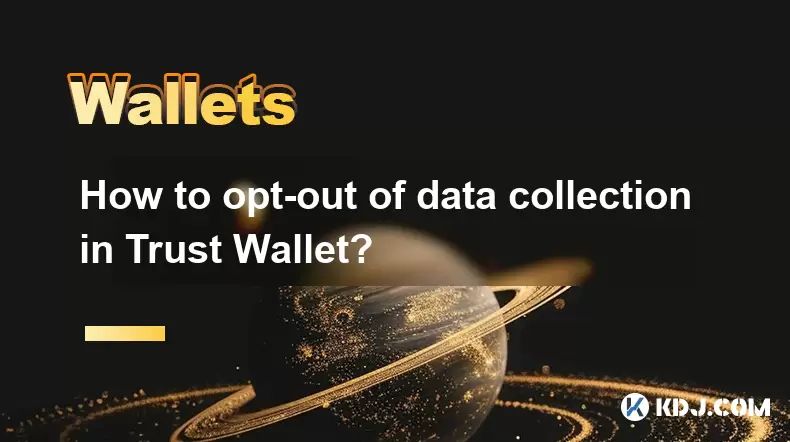
How to opt-out of data collection in Trust Wallet?
Jul 01,2025 at 12:22pm
Understanding Data Collection in Trust WalletTrust Wallet, a popular mobile cryptocurrency wallet, collects certain types of data to enhance user experience and ensure the security of transactions. This data may include device information, usage patterns, crash reports, and anonymous analytics. While Trust Wallet emphasizes that it does not store privat...

Is it safe to enter my Trust Wallet recovery phrase online?
Jul 01,2025 at 11:42am
Understanding the Role of a Recovery Phrase in Trust WalletA recovery phrase, also known as a seed phrase, is a sequence of 12 or 24 words generated during the initial setup of your Trust Wallet. This phrase acts as the ultimate backup to your wallet and grants access to all your funds stored within it. It is essentially the master key to your digital a...
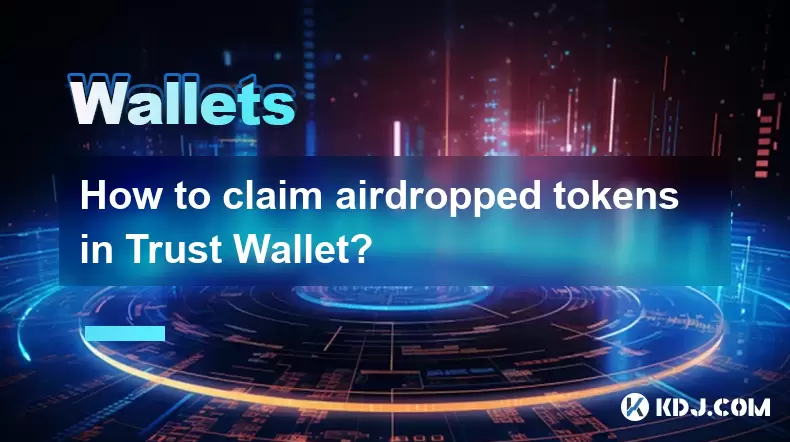
How to claim airdropped tokens in Trust Wallet?
Jul 01,2025 at 12:29pm
What Is an Airdropped Token?An airdropped token is a type of cryptocurrency distributed for free to wallet addresses, often as part of a marketing strategy or blockchain project launch. These tokens are typically sent automatically to eligible wallets or require users to complete certain tasks before claiming them. Trust Wallet, being one of the most wi...
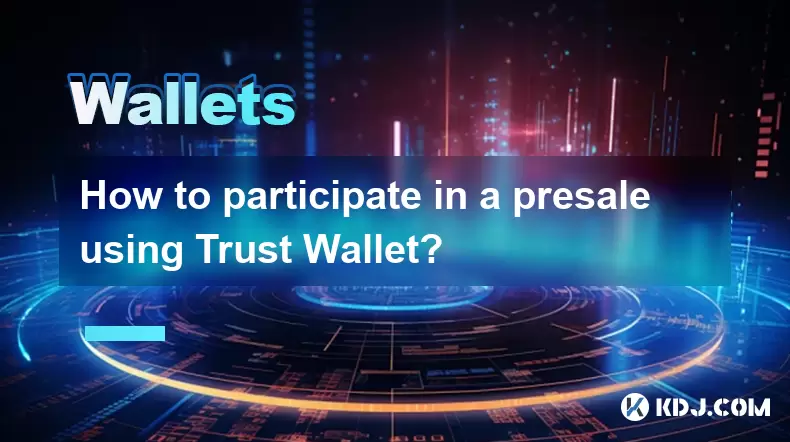
How to participate in a presale using Trust Wallet?
Jul 01,2025 at 01:35pm
What is a Presale in the Cryptocurrency Space?In the cryptocurrency industry, a presale refers to an early fundraising round where projects sell their tokens to a limited number of investors before launching on public exchanges. These events often offer discounted token prices and are considered high-risk due to the speculative nature of new blockchain ...
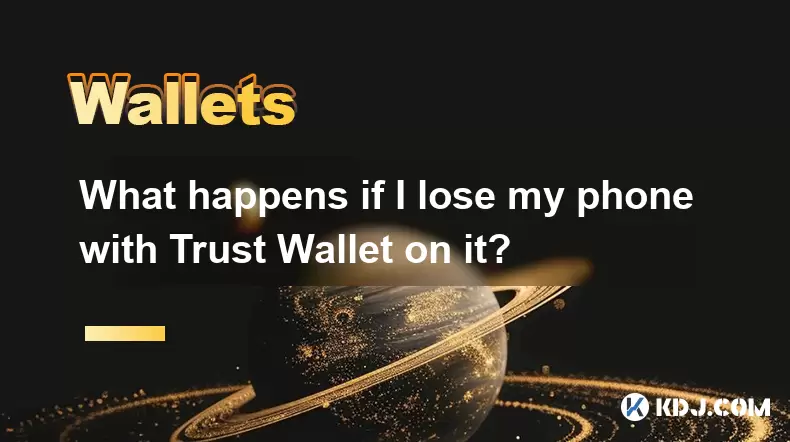
What happens if I lose my phone with Trust Wallet on it?
Jul 01,2025 at 10:03am
Understanding the Risks of Losing Your Phone with Trust WalletLosing your phone can be a stressful experience, especially if you use it to store digital assets through apps like Trust Wallet. The private keys and recovery phrases stored on your device are critical for accessing your cryptocurrencies, and losing access to them could result in permanent l...
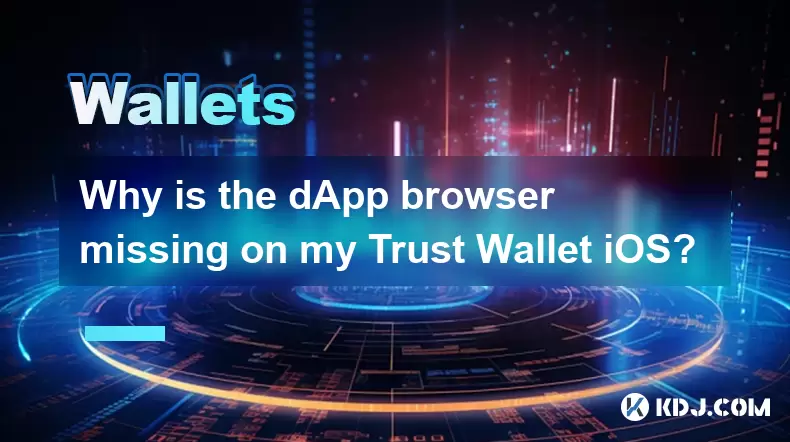
Why is the dApp browser missing on my Trust Wallet iOS?
Jul 01,2025 at 01:01pm
Understanding the dApp Browser on Trust WalletThe dApp browser is a critical feature for interacting with decentralized applications directly from your wallet. In Trust Wallet, this functionality allows users to connect to various blockchain-based services without needing to switch apps or platforms. However, some Trust Wallet iOS users have reported th...

How to opt-out of data collection in Trust Wallet?
Jul 01,2025 at 12:22pm
Understanding Data Collection in Trust WalletTrust Wallet, a popular mobile cryptocurrency wallet, collects certain types of data to enhance user experience and ensure the security of transactions. This data may include device information, usage patterns, crash reports, and anonymous analytics. While Trust Wallet emphasizes that it does not store privat...

Is it safe to enter my Trust Wallet recovery phrase online?
Jul 01,2025 at 11:42am
Understanding the Role of a Recovery Phrase in Trust WalletA recovery phrase, also known as a seed phrase, is a sequence of 12 or 24 words generated during the initial setup of your Trust Wallet. This phrase acts as the ultimate backup to your wallet and grants access to all your funds stored within it. It is essentially the master key to your digital a...

How to claim airdropped tokens in Trust Wallet?
Jul 01,2025 at 12:29pm
What Is an Airdropped Token?An airdropped token is a type of cryptocurrency distributed for free to wallet addresses, often as part of a marketing strategy or blockchain project launch. These tokens are typically sent automatically to eligible wallets or require users to complete certain tasks before claiming them. Trust Wallet, being one of the most wi...

How to participate in a presale using Trust Wallet?
Jul 01,2025 at 01:35pm
What is a Presale in the Cryptocurrency Space?In the cryptocurrency industry, a presale refers to an early fundraising round where projects sell their tokens to a limited number of investors before launching on public exchanges. These events often offer discounted token prices and are considered high-risk due to the speculative nature of new blockchain ...

What happens if I lose my phone with Trust Wallet on it?
Jul 01,2025 at 10:03am
Understanding the Risks of Losing Your Phone with Trust WalletLosing your phone can be a stressful experience, especially if you use it to store digital assets through apps like Trust Wallet. The private keys and recovery phrases stored on your device are critical for accessing your cryptocurrencies, and losing access to them could result in permanent l...

Why is the dApp browser missing on my Trust Wallet iOS?
Jul 01,2025 at 01:01pm
Understanding the dApp Browser on Trust WalletThe dApp browser is a critical feature for interacting with decentralized applications directly from your wallet. In Trust Wallet, this functionality allows users to connect to various blockchain-based services without needing to switch apps or platforms. However, some Trust Wallet iOS users have reported th...
See all articles

























































































